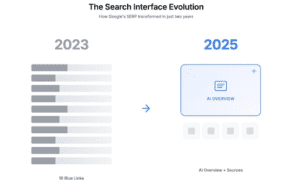Like all other industries, the technology sector is influenced by interest rates, which determine investment decisions. As its most capital-intensive and dynamic industry segment, the tech sector depends significantly on venture capital, private equity, and debt financing. The cost of capital, investor sentiment, and overall funding flows into technology firms depend strongly on changes in interest rates. Every participant in the modern tech investment environment needs to understand how changes in interest rates impact the sector.
- The Relationship Between Interest Rates and Investment Costs
Technological companies pay attention to interest rates because they determine their expenses when obtaining loans. Businesses that obtain low-interest loans use them to fund their research activities, development work, and expansion projects. Lower interest rates help startup companies and venture-backed entities obtain external funding to expand their operations effectively.
Matt Bick, Director at Alan Bick, says, “When interest rates increase, tech companies face increasingly expensive borrowing expenses because borrowing funding becomes pricier. As the cost of borrowing increases, businesses must allocate their capital differently, slowing their ability to innovate and develop new products. Companies will likely prefer profitability over expansion during rising borrowing costs, affecting the industry’s growth patterns.”
- Influence on Venture Capital and Private Equity Funding
The technology sector expands using funding from venture capital (VC) and private equity (PE) investments. The present low interest rate environment motivates financial investors to redirect their capital toward technology businesses since these investments generate superior returns compared to standard bonds.
Rising interest rates lead investors from VC and PE to decrease their investment behaviors that they used previously. Investors transfer their funds toward safe bonds, which generate higher returns, leading them to abandon technology startup investments. Rising interest rates make investors shift their funding toward safe investment options that offer better returns, creating new challenges for emerging technology companies in their capital acquisition.
- Stock Market Valuations and Tech Companies

Stock market values in the technology field heavily depend on current interest rate levels. During low interest rate periods, investors value stocks higher because they hunt for growth-oriented stocks generating strong future earnings. When investors value the potential growth prospects of technological companies, they enhance their valuations.
Nely Hayes, Marketing Manager at HEXO Electrical Testing, asserts, “When interest rates increase, stock market values tend to decrease. High interest rates decrease the present-day value of upcoming earnings, which reduces the attractiveness of tech stocks for growth investments. Tech companies face rising market volatility because investors now invest in industries with steady returns rather than volatile tech stocks.”
- The Effect on Mergers and Acquisitions (M&A)
Primary growth in the technology market relies on mergers and acquisitions (M&A) processes, which strongly respond to changes in interest rates. The rise of M&A transactions prompts businesses to use debt financing because of prevailing low interest rates. Through low-cost financing, large technology companies can simultaneously acquire smaller startups and drive the development of new technologies and market integration.
“Higher interest rates slow business M&A transactions. Companies exercise greater caution when deciding on mergers because acquiring entities view financing costs unfavorably. Structural transitions in the technology investment market continue because acquisition movements modify industry competition and diminish the number of startup companies available for buying,” said Pali Banwait, Founder of Strive
- Impact on Consumer Spending and Tech Adoption
Customers base their consumption behavior on interest rates, which control their readiness to buy technological and subscription-based products. Reducing interest rates allows customers to pay more easily for smartphones, laptops, and product subscriptions. Technology companies generate higher payment revenues because customers have increased their product demand, leading companies to boost their research and development activities.
Gerrid Smith, Chief Marketing Officer at Joy Organics, commented, “The increase in interest rates leads consumers to decrease their spending activities. When borrowing expenses rise, consumers reduce their expenditure on non-essential items, including technology products, because they have less money. Changing consumer patterns influence tech profit margins, so business organizations must change their pricing approaches and product lines.”
- Future Outlook: Navigating Interest Rate Changes in Tech Investments

Tech investors need to speed up their response to worldwide interest rate changes because these reforms have become essential for their business operations. The core strategy of risk mitigation organizations relies on multiple financial streams, capital structure adaptations, and stable funding sources. Tech startup investors require consistent interest rate observation because these trend variations shape technology company valuation and their future growth potential.
“Technology remains a stable growth industry that resists occasional changes in interest rates. Based on current market data, investors find artificial intelligence, cloud computing, and digital transformation appealing investment options. Financial organizations and investment institutions must adjust their operations according to economic macro-level movements because the financial marketplace is volatile,” says Michael Reider, Chief Executive Officer at YUNG Sidekick
Conclusion
Interest rates profoundly influence occupational costs, investor attitudes, market valuations, equity acquisition deals, and customer conduct in technology sector investments. Low interest rates drive business growth through innovation, yet increasing rates create strategic problems that must be addressed. Investors and tech firms must understand these adjustments because they determine their ability to thrive within the industry over multiple years.



































